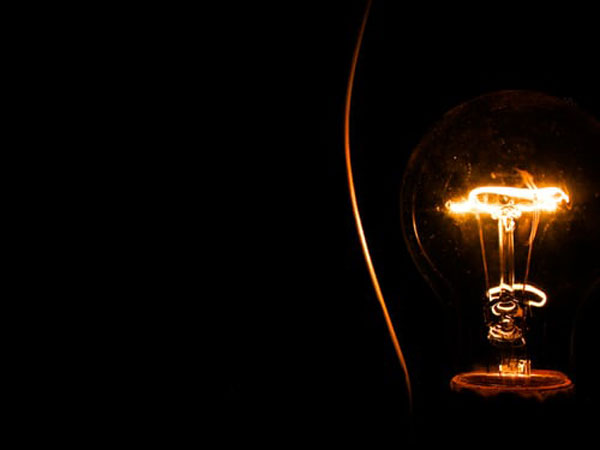How Much Does It Really Cost to Install a Whole-House Generator in South Jersey?
By Space Coast Daily // April 16, 2025

For homeowners in South Jersey considering a whole-house generator, understanding the costs involved is crucial. The average installation cost for a whole-house generator typically ranges from $5,000 to $12,500, depending on factors like the size and brand of the unit.
This significant investment ensures continuous power during outages, which is increasingly vital for maintaining home comfort and safety.
Opting for professional installation can be beneficial. Trained electricians not only ensure the unit is installed correctly and safely, but they also offer insights about local regulations and maintenance needs that might not be apparent otherwise. This approach minimizes risks associated with improper setup and enhances long-term performance.
This approach minimizes risks associated with improper setup and enhances long-term performance, ultimately protecting your investment. Understanding the benefits of professional generator installation goes beyond just proper setup; it also covers ongoing maintenance and compliance with local codes. A trained electrician can also identify potential issues early on, preventing costly repairs down the line. With the right expertise, homeowners can rest assured that their generator will function optimally when it’s needed most.
Key Takeaways
- Whole-house generator installation costs vary widely.
- Professional installation offers significant safety and reliability benefits.
- Correctly sizing and setting up the generator is essential for optimal performance.
Assessing Your Power Needs
When considering a whole-house generator in South Jersey, determining power requirements is crucial. It’s important to evaluate the total power load to ensure constant electricity during an outage. Understanding these needs ensures that the generator can manage essential home functions effectively.
Determining Power Capacity and Load Requirements
Accurately assessing power capacity is essential for any setup including a standby generator. Start by listing all critical appliances that need electricity during an outage, such as refrigerators, HVAC systems, and medical devices. Calculate their wattage and add a buffer for unexpected needs. This calculation establishes the baseline for your power load.
To ensure the chosen generator is effective, the power load must match its capacity. Consider future electrical needs as well. A professional evaluation can provide a comprehensive analysis, ensuring the generator supports the full load without strain during outages.
The Relevance of Whole-House Generators During Power Outages
Whole-house generators provide seamless power during outages, significantly reducing disruptions. They automatically supply electricity when the grid fails, keeping essential services functional. Such features are crucial in areas with frequent power interruptions.
These generators are invaluable for maintaining comfort and safety, especially during severe weather. By delivering constant power, they prevent food spoilage, ensure medical equipment runs uninterrupted, and maintain home security systems. This reliability underscores the importance of selecting a generator with appropriate capacity tailored to meet household demands during a power outage.
Key Considerations for Installation and Operation
Installing a whole-house generator involves selecting the appropriate model, understanding installation and operational requirements, and considering costs such as fuel consumption and maintenance. Making an informed decision can enhance the efficiency and reliability of the generator system.
Choosing the Right Generator Model
Selecting the ideal generator model involves assessing home energy needs, such as voltage 120/240 single-phase capability. Brands like Generac, known for their reliable Generac Guardian series, offer features including a G-Force Engine and models compatible with a transfer switch. A key factor is the generator’s power relative to household requirements, such as A/C ton ratings and anticipated load.
Features like auto start and low oil alert/shutdown are crucial. The transfer switch amperage and whether wi-fi remote monitoring is necessary should also be considered. Evaluating features ensures the generator meets both immediate and long-term household needs. Prioritizing reputable brands and understanding specific functionalities can lead to better satisfaction with the chosen generator model.
Installation Prerequisites and Process
Before installation, ensure the generator is in stock, and all necessary components like the mounting pad are ready. The installation process begins with assessing site suitability, focusing on areas near essential resources like a propane tankor well. It’s critical to account for local regulations, especially concerning distances to structures like barns.
The circuit breaker size and service disconnect requirements must align with existing home systems. Professionals should handle the installation to ensure safety compliance and optimal connection to the battery charger and other elements. Such precision ensures the generator functions efficiently and reliably, ready for unexpected outages.
Operational Costs and Fuel Consumption
Operational costs involve fuel prices and consumption rates. Home standby generators vary in efficiency, with some models using less propane than others. Typically, fuel consumption depends on the generator’s load; thus, calculating anticipated usage under typical conditions is essential.
Wi-Fi remote monitoring assists in tracking fuel levels and efficiency, while load shedding features can optimize consumption by prioritizing essential circuits during peak demand. Knowing the market price for fuels and opting for efficient models minimize operational expenses, keeping the generator economical throughout its lifespan.
Understanding Warranties and Maintenance Needs
Consider both consumer warranty and commercial warranty durations when purchasing. Warranties often cover parts and labour for specific periods, providing assurance against manufacturing defects. Regular maintenance needs, including checking the cooling system and performing routine oil changes, are critical for durability and performance.
The Generac OHVI engine, for example, requires specific maintenance routines to maintain efficiency. Knowing maintenance schedules helps prevent breakdowns and extends the lifespan of components. A comprehensive maintenance plan ensures that the generator remains reliable, providing backup power when needed the most.
Conclusion
In South Jersey, the cost of installing a whole-house generator can vary widely. Prices often range from about $7,500 to $22,000, depending on the generator size and complexity of the installation.
Many factors influence these costs, including the type of generator and additional features. Selecting a reliable installer is crucial for ensuring both quality and safety.
Understanding these aspects helps homeowners make informed decisions to best suit their needs and budget.












